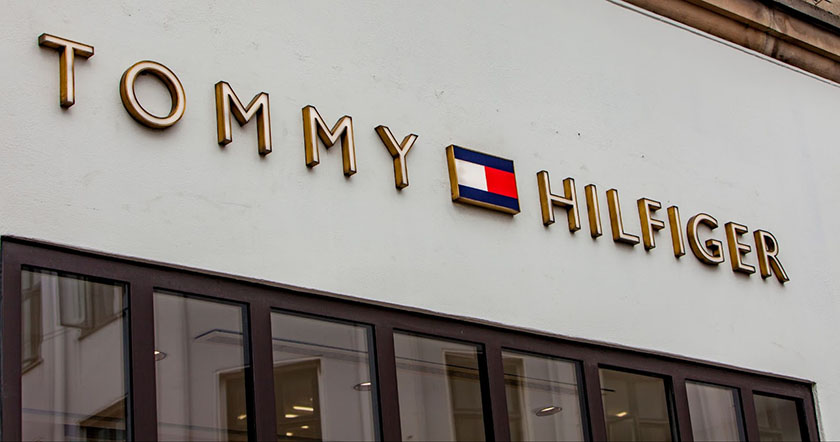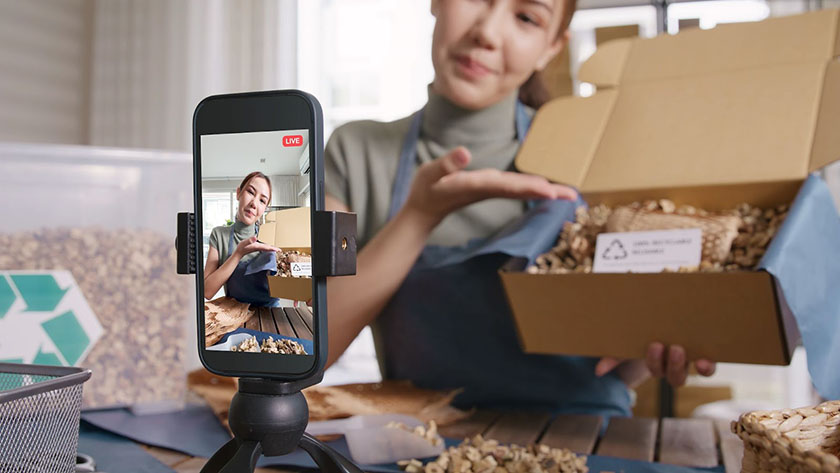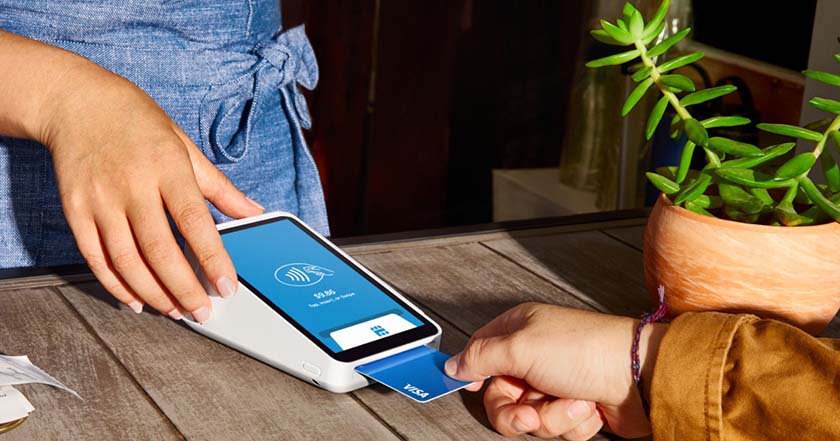The small business retail environment is competitive, especially as local retailers fight for shoppers’ attention in a sea of big box retail stores. One way to stay competitive is to integrate technology into your business—and to keep an eye on technology trends in retail so you can stay ahead of the game.
As we step into 2024, the retail landscape is set to go through shifts driven by evolving technologies. Drawing insights from research and data, this article delves into five key retail technology trends anticipated to shape the industry in 2024.
1. Automation
Retail automation refers to advanced technologies and systems that streamline and optimize various processes within a retail business. Automation is expected to continue to impact the retail industry—in fact, a study reveals that in-store automation is among the top 2024 trends for 14% of companies surveyed.
Automation technology in retail encompasses a range of tools, including artificial intelligence, machine learning, robotics, and data analytics, all aimed at improving operational efficiency, reducing costs, and enhancing the overall customer experience. According to G2, more than 50% of cloud solutions will have automation capabilities by 2025.
Retailers will increasingly adopt automation technologies to streamline operations and reduce costs. Automation will be used to manage inventory, optimize pricing, and improve customer service. Retailers will also use automation to provide customers with a seamless shopping experience, from browsing to checkout.
And shoppers welcome this trend. In fact, 73% of consumers actually prefer local retailers to automate at least one task in their purchase journey instead of using staff, and 44% want to be able to use an automated tool to get more product information and availability.
Check out these resources to learn ways to automate parts of your retail business:
- Best Workflow Automation Software
- What Is CRM Automation? Benefits & Examples
- Best Sales Automation Software Tools
2. Artificial intelligence (AI) chatbots
The use of artificial intelligence (AI) technology spans almost every aspect of operating a retail business. But one area where the industry is going to see a lot of innovation is when it comes to chatbots.
Global retail spending on chatbots is estimated to be $12 billion by the end of 2023, increasing by 470% to $72 billion by 2028. Much of this growth is predicted to be fueled by the emergence of cost-effective open language models like ChatGPT in North America and Europe.
The benefits? These chatbots can provide customers with instant support and assistance—without the need for a human support agent. According to estimates, chatbots will save retailers $439 billion annually.
AI chatbots can do more than just provide instant answers to common queries. They can enable retailers to personalize the shopping experience, optimize pricing, and improve supply chain management.
AI chatbots can provide 24/7 customer support, helping small businesses engage with customers beyond regular business hours. This continuous accessibility contributes to improved customer satisfaction and loyalty.
Chatbots in Action

After implementing a Facebook Messenger chatbot, Tommy Hilfiger saw an:
- 87% return rate for people coming back again to use the Messenger experience.
- 3.5 times higher average spend for customers shopping through Messenger than any other digital channel.
As seen in the Tommy Hilfiger example above, in addition to automating routine tasks such as answering frequently asked questions, chatbots can also process orders, and provide product recommendations. This automation can significantly reduce the workload on small business owners and employees, allowing them to focus on more strategic aspects of their operations.
AI chatbots contribute to personalized shopping experiences by analyzing customer preferences and purchase history. This personalization enhances customer engagement and increases the likelihood of successful sales—as you also see above.
Check out these guides to help you incorporate AI chatbots into your retail business:
- Artificial Intelligence in Customer Service: The Ultimate Guide
- AI in Retail: Small Business Guide
- AI in Ecommerce: Small Business Guide
- Ultimate Guide to Ecommerce Chatbots
3. TikTok & Social Commerce

Social commerce has been on an upward trajectory for a few years now, and it only stands to continue in that trend. One social network in particular is trendy among young consumers and small businesses around the world: TikTok.
The video-sharing social media network has more than 102 million active users, a number expected to grow to over 121 million by 2027—making it one of the fastest-growing channels.
Plus, TikTok is primed for ecommerce, with robust advertising and targeting tools, plenty of opportunity to reach new audiences organically, and in-app shopping. So it’s set to be one of the most increasingly important social networks for small business retailers.
Looking to hop on this retail tech trend? Check out this list of products to sell on TikTok and these TikTok marketing strategies to help spread the word.
4. Omnichannel Commerce
Omnichannel commerce is another trend for retailers (17%) in 2024. Omnichannel involves the integration of online and offline channels for customers to start their shopping journey on one platform and seamlessly transition to another without any disruption. For instance, customers might research products online, make a purchase in-store, and later track their orders through a mobile app.
Though the concept has been floating around in retail for a while, it continues to get more complex with technology. Retailers will continue to leverage technology to focus on omnichannel distribution throughout 2024 and use data analytics to provide personalized recommendations and promotions to customers across all channels.
Data analytics allows retailers to gather insights into customer behavior, preferences, and purchasing patterns across various channels. This personalized approach enhances customer engagement, loyalty, and the overall shopping experience.
Retailers are exploring innovative ways to use data analytics to optimize inventory management and supply chain operations. Predictive analytics can help forecast demand more accurately, preventing stockouts and overstock situations. This data-driven approach enhances overall operational efficiency and ensures that products are available when and where customers want them.
Check out these resources to help you optimize your omnichannel approach:
- Omnichannel vs Multichannel Retailing: Key Differences
- Omnichannel Statistics for Retailers
- Showrooming & Webrooming: Retailers’ Guide
5. Untethered POS Systems

(Source: Square)
Modern point-of-sale (POS) systems have completely changed the checkout experience. Now, rather than requiring customers to visit a specific checkout counter or location, mobile POS (mPOS) technology has enabled retailers and their associates to meet shoppers where they’re at.
In fact, mPOS payments are expected to surpass $1.9 trillion by 2024. And it’s estimated that there will be 94.7 million mPOS users by 2027.
Increasingly, associates armed with handheld devices will be able to meander about the store, interact with customers, look up items, and complete sales on the spot. Retailers can take orders at trade shows, curbside, or off-site locations and sync all the data with the main store.
If you’re interested in finding the best untethered POS technology for your retail store, check out these posts:
- Best POS Apps & Mobile POS Systems
- Best POS Inventory Systems
- Best POS Systems for Small Business
- POS Trends & Technologies Shaping the Future of Retail
Frequently Asked Questions (FAQs)
Click through the sections below for some of the most common questions around retail technology trends.
The top retail technology trends include:
- Automation
- Artificial intelligence (AI) chatbots
- TikTok and social commerce
- Omnichannel
- Untethered POS systems
New and trending online retail and ecommerce technologies include:
- AI-generated content like product descriptions
- AI-powered web design
- Livestream shopping
- Voice commerce
- Augmented reality
- Visual search
Basic technology you’ll find in every store includes a point-of-sale (POS) system and a payment processor. Some stores also use self-checkout and self-service kiosks, smart fitting room technology, RFID inventory tracking, digital receipts, and more.
Retailers use AI for:
- Chatbots
- Content creation
- Demand forecasting
- Supply chain management
- Merchandising and layout optimization
- And more
Bottom Line
Retail and technology can come together to help you run an efficient, cost-effective, and optimized small business. Keeping an eye on the current and emerging retail technology trends will help you stay ahead of the competition and excite customers, new and old.